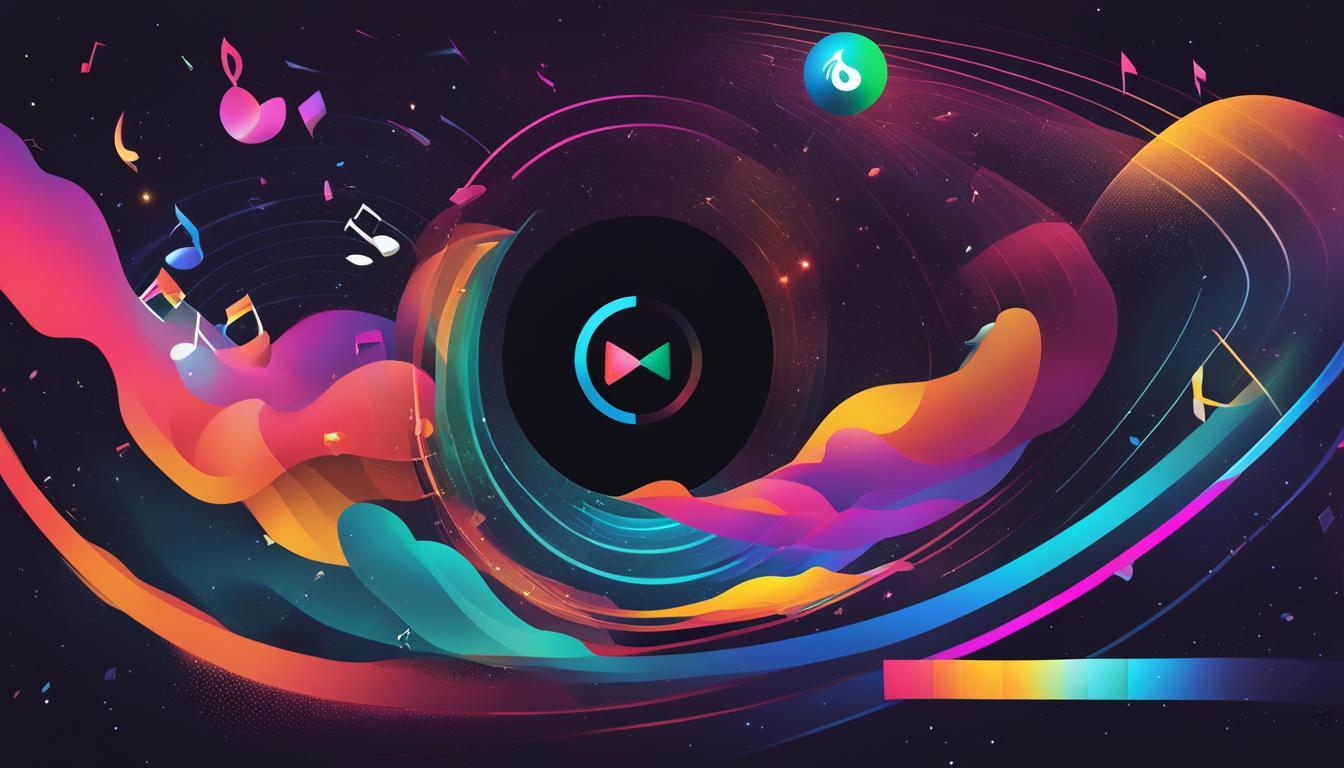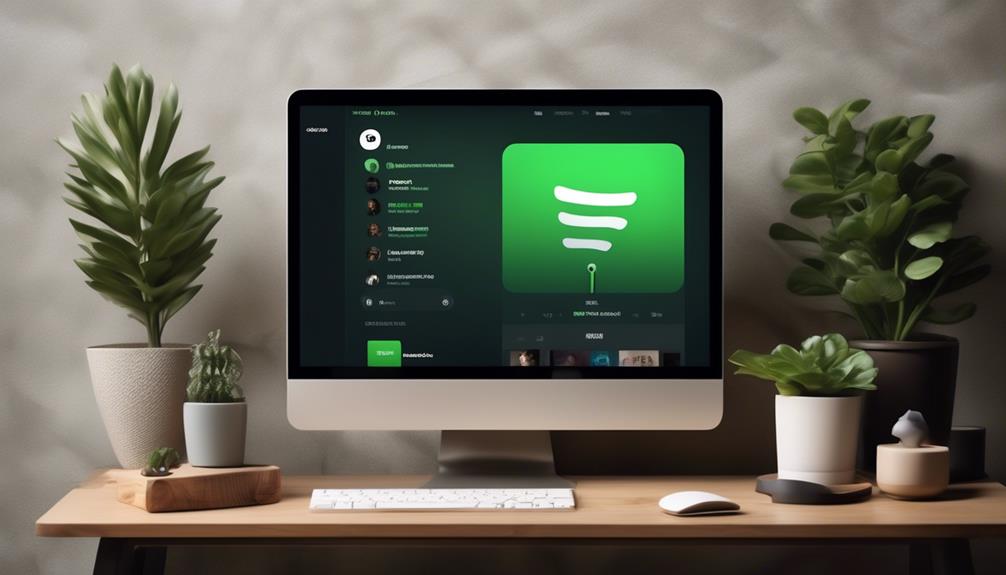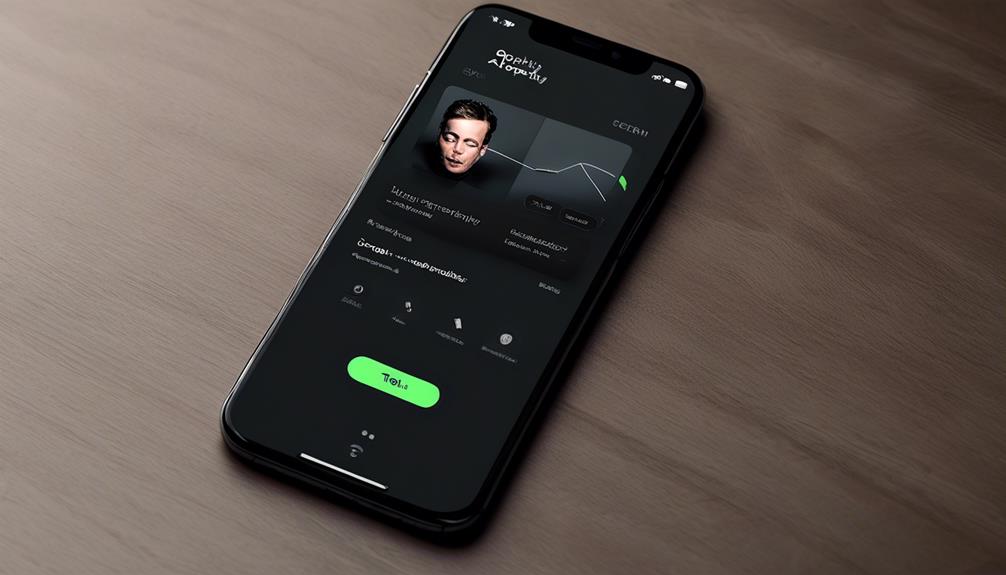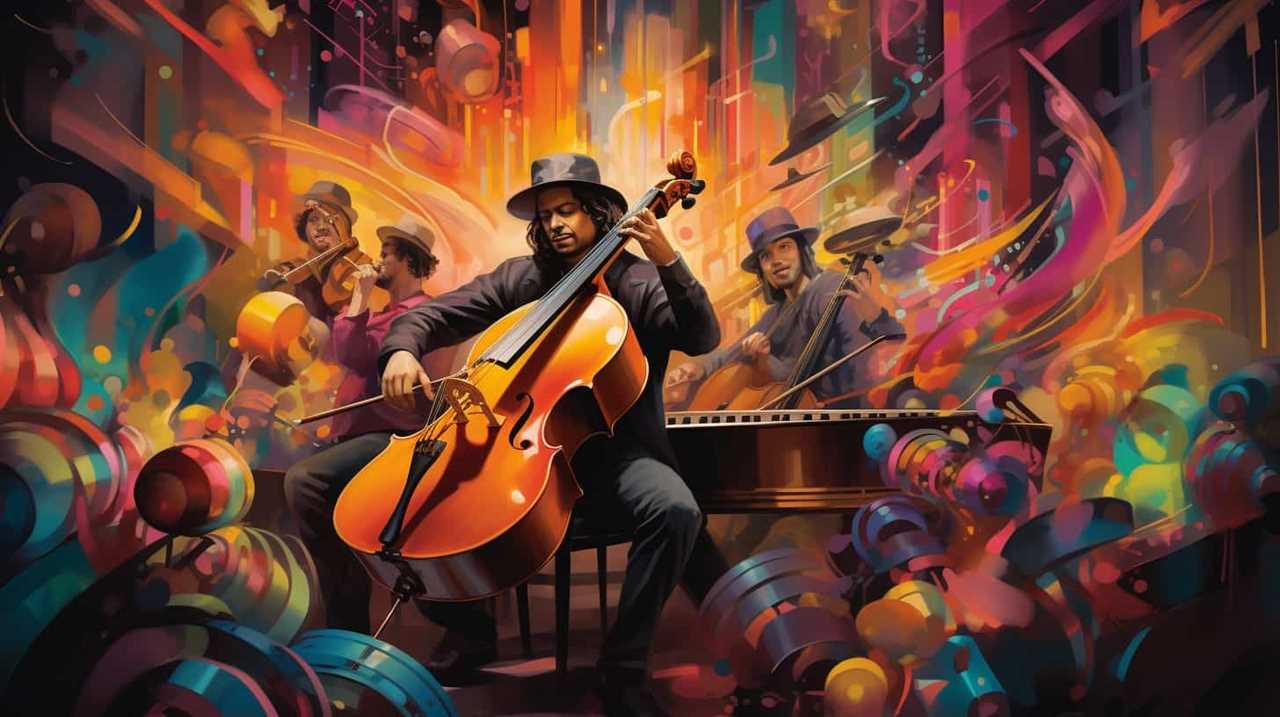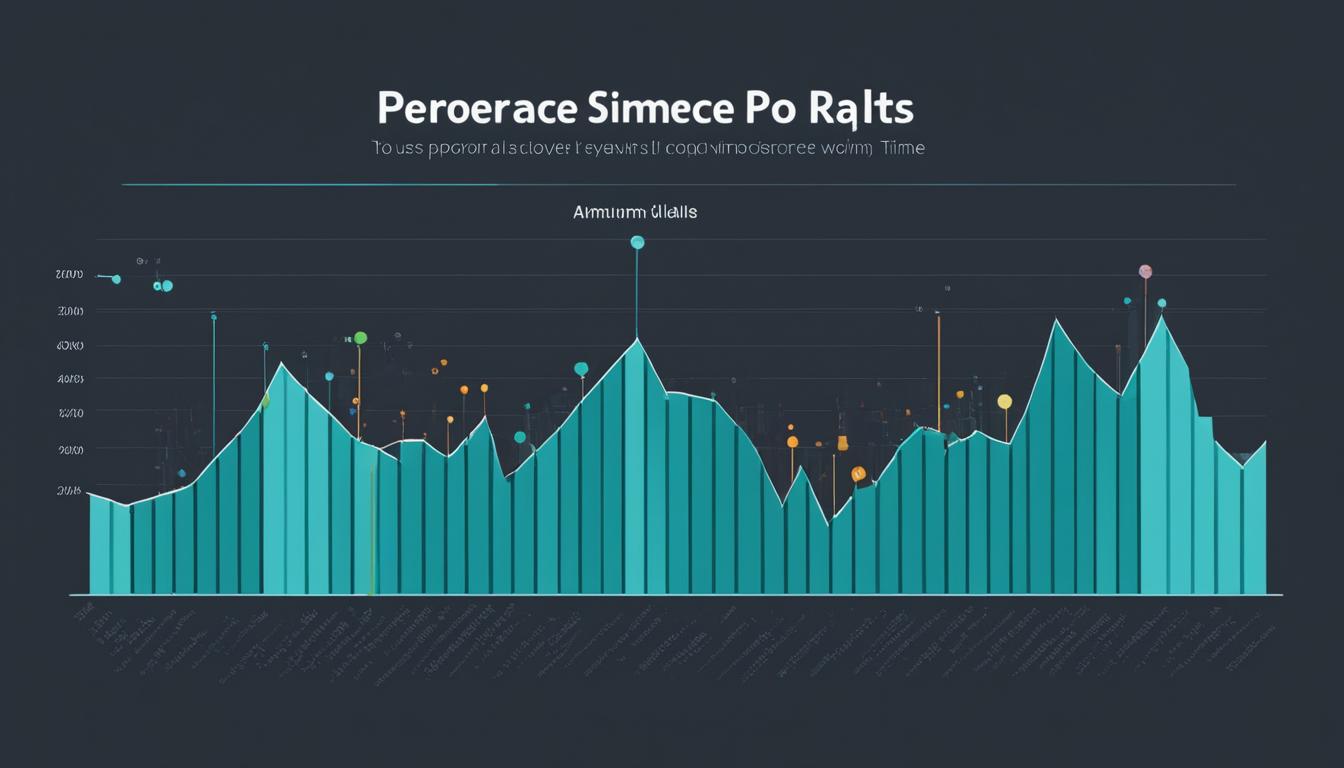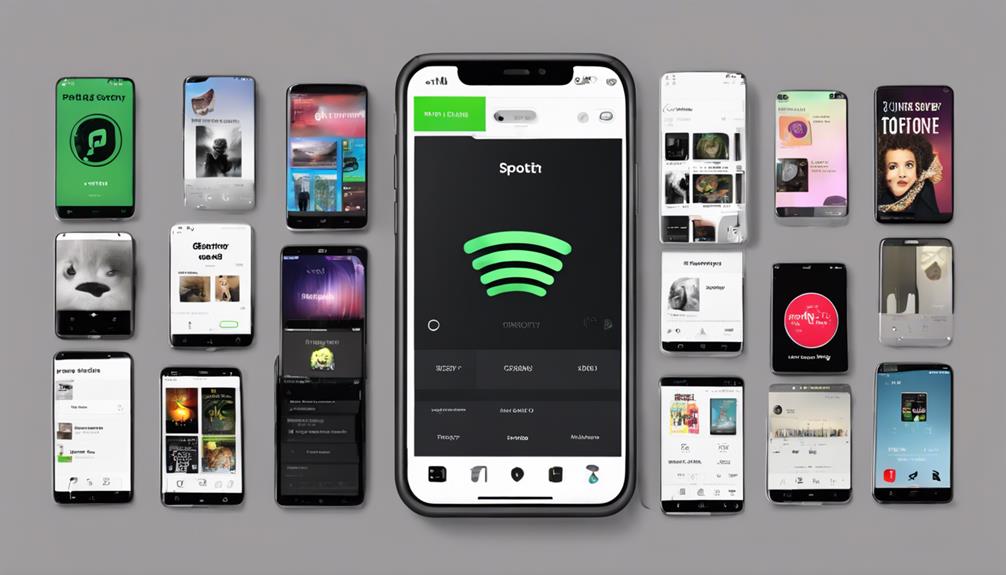Welcome to our comprehensive comparison of the top music streaming platforms: Spotify, Apple Music, and Amazon Music. If you are searching for the ultimate music streaming service that fits your requirements, you are in the right spot. We will explore the features, advantages, and user interactions of each service, aiding you in making a well-informed choice.
In this article, we will explore the pricing and subscription plans, music libraries and content, audio quality, user experience and interface, personalization and recommendations, offline listening and downloading, platform compatibility, exclusive content and collaborations, social sharing and community, artist discovery and curation, pricing and value for money, future updates and innovations. By the end, you’ll be equipped with all the information to choose the music streaming service perfect for you.
Key Takeaways
- Spotify, Apple Music, and Amazon Music are the top contenders in the music streaming industry.
- Consider pricing, music library, user experience, personalization, and future updates when making your decision.
- Each service has its own strengths and advantages, so it’s essential to evaluate your preferences.
- Take into account the features like offline listening, platform compatibility, and exclusive content.
- Remember that the best music streaming service is ultimately the one that aligns with your unique needs and requirements.
Pricing and Subscription Plans
When it comes to choosing a music streaming service, pricing and subscription plans are important factors to consider. Let’s take a look at the pricing options available for Spotify, Apple Music, and Amazon Music.
Spotify: Spotify offers a free tier with advertisements, allowing you to enjoy music without a subscription. However, if you want to enjoy an ad-free experience and access additional features, you can opt for their premium plan. The Spotify premium plan is priced at $9.99 per month, making it a popular choice for music enthusiasts.
Apple Music: Apple Music also offers a subscription plan priced at $9.99 per month. With this plan, you can enjoy unlimited music streaming, curated playlists, and exclusive content available on the platform. Apple Music provides a seamless integration with other Apple devices and services, making it a convenient option for Apple users.
Amazon Music: Amazon Music offers a variety of pricing options to cater to different users. Prime members can enjoy a discounted price of $7.99 per month for Amazon Music Unlimited, while non-Prime members can subscribe for $9.99 per month. Amazon Music also offers a family plan and an annual plan for those looking for long-term subscriptions.
The pricing and subscription plans of each service may vary, so it’s important to consider your budget and preferences when choosing a music streaming service. Whether you’re looking for a free option with advertisements, a premium experience without ads, or additional benefits, there’s a pricing plan that suits your needs.
To help you visualize the pricing options, here’s a table summarizing the pricing and subscription plans of Spotify, Apple Music, and Amazon Music:
| Music Streaming Service | Pricing | Subscription Plans |
|---|---|---|
| Spotify | $9.99 per month | Free tier with ads, Premium plan |
| Apple Music | $9.99 per month | Single plan |
| Amazon Music | $7.99 per month (Prime), $9.99 per month (non-Prime) | Variety of plans including family and annual |
Music Library and Content
When it comes to music streaming services, one of the key factors to consider is the music library and content they offer. Spotify, Apple Music, and Amazon Music each have their own extensive collections of songs, giving users access to a vast array of music genres, artists, albums, and playlists.
Spotify takes the lead with its impressive music catalog, boasting over 30 million songs. This means that whether you’re a fan of mainstream hits or niche genres, you’re likely to find your favorite tunes on Spotify. The platform’s commitment to delivering a wide range of music makes it a go-to choice for many music enthusiasts.
Apple Music and Amazon Music also offer substantial music libraries, ensuring that users have access to a diverse selection of songs. While the specific number of tracks may not be as publicly disclosed as Spotify’s, both services have established partnerships with major record labels and independent artists to bolster their music content.
Additionally, each streaming service may have exclusive content and collaborations that set them apart from their competitors. Spotify, for example, is known for its exclusive sessions and collaborations with renowned artists. Apple Music and Amazon Music also have their fair share of exclusive releases and unique content. These exclusives provide added value and entertainment for users who want to experience something different or stay up-to-date with their favorite artists.
When choosing a music streaming service, it’s crucial to consider the breadth and diversity of the music libraries offered. Whether you’re looking for popular hits, underground tracks, or niche genres, evaluating the music catalog and exclusive content can help you find the streaming platform that aligns with your musical preferences.
The Music Libraries at a Glance:
| Music Streaming Service | Music Library | Exclusive Content |
|---|---|---|
| Spotify | Over 30 million songs | Exclusive sessions and collaborations with artists |
| Apple Music | Extensive music library | Exclusive releases and unique content |
| Amazon Music | Diverse selection of songs | Exclusive content and collaborations |
Audio Quality
When it comes to the audio quality of music streaming services, Spotify, Apple Music, and Amazon Music all prioritize delivering an exceptional listening experience. Each platform offers various audio quality settings to cater to different preferences and ensure that your favorite songs sound their best.
Spotify sets the bar high with its streaming options, including a lossless option for premium subscribers. This lossless audio quality allows you to enjoy your music with incredible clarity and detail, providing a truly immersive listening experience.
Apple Music and Amazon Music also offer high-quality streaming, guaranteeing the delivery of top-notch audio to your ears. Although they may not provide a specific lossless option like Spotify, their standard streaming quality is still impressive, capturing the nuances and richness of the music you love.
When evaluating the audio quality of each service, consider your personal audio preferences and the devices you’ll be using to listen to music. Some devices have superior audio capabilities that can truly showcase the quality of the music, while others may not provide the same level of fidelity.
Now, let’s dive deeper into the audio quality of each platform:
Spotify
Spotify offers a range of audio quality settings to suit your preferences and internet connection. Here are the options available:
- Normal: This is the default setting and delivers music at approximately 96 kbps, providing a good balance between quality and data usage.
- High: This setting streams music at approximately 160 kbps, offering better audio quality than the normal setting.
- Very High: For premium subscribers, Spotify’s very high setting streams music at approximately 320 kbps, ensuring a high-fidelity listening experience.
- Spotify Connect: When using Spotify Connect on compatible devices, you can access lossless audio quality, delivering music to your speakers or headphones in all its uncompressed glory.
Apple Music
Apple Music provides a high-quality streaming experience for its users. The audio quality is automatically adjusted based on your internet connection and available bandwidth. While Apple Music doesn’t offer specific quality settings, you can be confident that you’ll enjoy your favorite tracks with outstanding clarity and accuracy.
Amazon Music
Amazon Music also ensures a high-quality streaming experience. Similar to Apple Music, Amazon Music adjusts the audio quality based on your internet connection speed. The platform automatically optimizes the streaming quality to provide the best possible listening experience.
Now that you have a better understanding of the audio quality offered by Spotify, Apple Music, and Amazon Music, you can make an informed decision based on your personal preferences and the devices you use to listen to music.

Audio Quality Comparison
| Streaming Service | Audio Quality Settings | Lossless Option |
|---|---|---|
| Spotify | Normal, High, Very High | Available with Spotify Connect |
| Apple Music | Automatic quality adjustment | No specific lossless option |
| Amazon Music | Automatic quality adjustment | No specific lossless option |
User Experience and Interface
The user experience and interface of a music streaming service can greatly impact your enjoyment of the platform. When it comes to user experience, Spotify stands out with its seamless and intuitive design. Navigating through playlists and discovering new music is a breeze, thanks to its user-friendly interface. The search feature is robust, allowing you to find songs, albums, and artists effortlessly.
Spotify’s dedication to providing a top-notch user experience is evident in its attention to detail and ease of use. Whether you’re a seasoned music aficionado or a casual listener, Spotify’s interface is designed to cater to all types of users.
On the other hand, Apple Music offers a sleek interface that seamlessly integrates with Apple’s ecosystem. If you’re already an Apple user, you’ll appreciate the familiarity and convenience of the interface. Apple Music’s interface allows easy access to your favorite music, playlists, and personalized recommendations.
With Apple Music, you get a refined interface that focuses on delivering a consistent and polished user experience, complementing the seamless integration with other Apple devices and services.
Amazon Music also provides a user-friendly platform that promotes a seamless music streaming experience. The interface is clean and well-organized, making navigation effortless. With Amazon Music, you can easily explore curated playlists, access your libraries, and discover new music recommendations.
Amazon Music’s interface emphasizes simplicity and functionality, allowing users to enjoy a hassle-free music streaming experience.
In summary, all three music streaming services offer user-friendly interfaces, each with its own advantages. Spotify excels with its intuitive design, Apple Music seamlessly integrates with the Apple ecosystem, and Amazon Music provides a simple yet functional platform. Consider the user experience and interface that resonate with your preferences and needs.
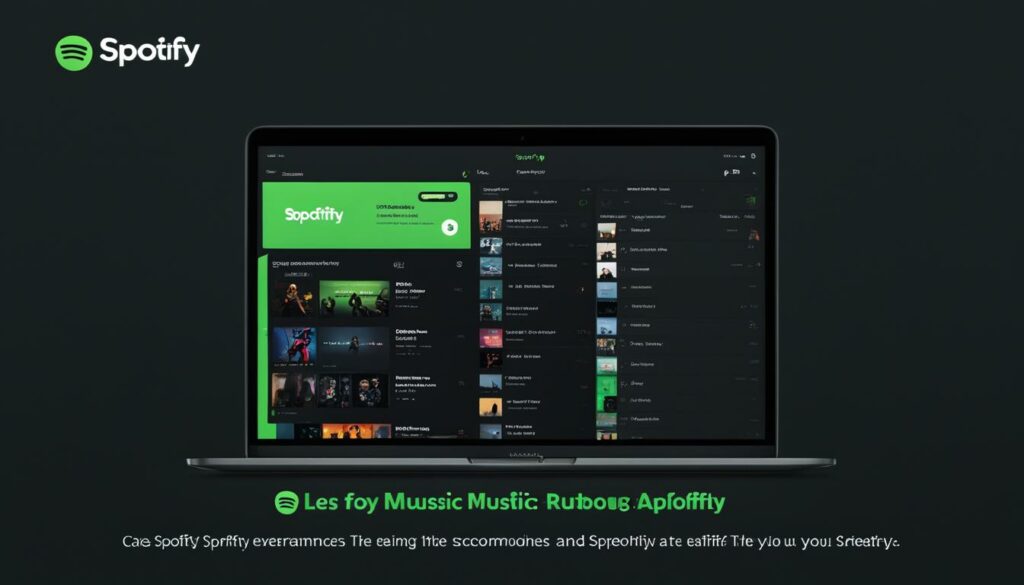
| Music Streaming Service | User Experience | Interface |
|---|---|---|
| Spotify | Intuitive | User-friendly design |
| Apple Music | Sleek and seamless integration with Apple ecosystem | Clean and polished |
| Amazon Music | Simple and hassle-free | Functional |
Personalization and Recommendations
When it comes to music streaming, personalization and recommendations can make all the difference in creating a tailored and enjoyable listening experience. Let’s explore how Spotify, Apple Music, and Amazon Music excel in this aspect.
Spotify Personalized Playlists
Spotify is renowned for its algorithmically curated playlists that seem to know exactly what you’re in the mood for. With its vast music catalog of over 30 million songs, Spotify’s personalized playlists are carefully crafted based on your listening habits, favorite artists, and even the time of day. From the ever-popular “Discover Weekly” to “Release Radar,” Spotify keeps you up-to-date with new music releases and helps you discover hidden gems that match your taste. With Spotify, every playlist feels like it was made just for you.
Apple Music Recommendations
Not to be outdone, Apple Music also offers impressive recommendations tailored to your preferences. Apple Music’s “For You” section highlights personalized playlists and recommendations based on your listening history and interests. The service takes into account your favorite genres, artists, and albums, creating a seamless browsing experience that feels both familiar and fresh. With Apple Music, you can easily discover new music and artists that resonate with your musical taste.
Amazon Music Personalized Recommendations
Amazon Music may not have been the first name that comes to mind when thinking about personalized recommendations, but the platform has made significant strides in this area. With Amazon Music, you can explore tailored playlists and recommendations that align with your music preferences. By analyzing your listening patterns and genre preferences, Amazon Music offers personalized suggestions that are designed to enhance your music discovery journey.
Overall, all three music streaming services provide personalized recommendations and curated playlists, catering to your unique listening preferences. Whether you’re a fan of Spotify’s algorithmic prowess, Apple Music’s artist-driven curation, or Amazon Music’s growing personalization features, you can expect a diverse range of music suggestions delivered directly to your fingertips.
Now, let’s take a look at a comprehensive breakdown comparing the personalization and recommendation features of Spotify, Apple Music, and Amazon Music:
| Spotify | Apple Music | Amazon Music | |
|---|---|---|---|
| Personalized Playlists | ✔️ | ✔️ | ✔️ |
| Algorithmic Recommendations | ✔️ | ✔️ | ✔️ |
| Artist-Driven Curation | ❌ | ✔️ | ❌ |
| Enhanced Music Discovery | ✔️ | ✔️ | ✔️ |
As you can see from the comparison table, each platform offers its own unique strengths in personalization and recommendations. Spotify shines with its algorithmically curated playlists and accurately tailored recommendations. Apple Music stands out with its artist-driven curation, allowing you to dive deeper into the music world. Meanwhile, Amazon Music is steadily improving its personalization features, providing a more tailored experience with each update.

With the wealth of personalized recommendations available on each service, you’ll never run out of great music to explore. Whether you’re looking for the perfect playlist for your morning run or discovering new artists in your favorite genre, Spotify, Apple Music, and Amazon Music have you covered.
Offline Listening and Downloading
For many music lovers, the ability to download songs and enjoy them offline is a valuable feature. Luckily, all three major music streaming services – Spotify, Apple Music, and Amazon Music – offer offline listening options. This means that you can still enjoy your favorite music even when you don’t have an internet connection.
When comparing these music platforms, it’s important to consider the ease of offline listening and downloading. Let’s take a closer look at how each service handles this feature:
- Spotify: With Spotify, offline listening is simple and straightforward. As a premium subscriber, you can easily download songs, albums, and playlists directly to your device. This ensures that you can enjoy your music anytime, anywhere, even without an internet connection.
- Apple Music: Apple Music also allows users to download songs for offline listening. Similar to Spotify, you can download albums and playlists to your device. This ensures that you have your favorite music at your fingertips, even when you’re offline.
- Amazon Music: Like Spotify and Apple Music, Amazon Music offers offline listening options. As a subscriber, you can download your favorite songs, albums, and playlists for offline enjoyment. This feature comes in handy when you’re on the go or in areas with limited internet access.
Whether you’re taking a road trip, commuting, or simply want to conserve data, the offline listening and downloading feature allows you to have your music library accessible at all times.
Experience the Freedom of Offline Listening
With all three music streaming services – Spotify, Apple Music, and Amazon Music – offering offline listening options, you can experience the freedom of enjoying your favorite music without being dependent on an internet connection. No matter where you are or what you’re doing, your music is always within reach.
Image:

Now, let’s move on to the next section to explore the compatibility of these music platforms with different devices.
Platform Compatibility
Spotify, Apple Music, and Amazon Music are compatible with a wide range of devices, including smartphones, tablets, desktop computers, and smart speakers.

However, when it comes to platform compatibility, Spotify stands out from the competition.
Spotify offers seamless cross-platform compatibility, allowing you to enjoy your music on various devices and applications. Whether you’re using an iPhone, Android device, Windows computer, or even a smart TV, Spotify ensures a smooth and consistent streaming experience.
Moreover, Spotify integrates well with third-party devices and applications, making it easy to connect and control your music across different platforms. It’s compatible with popular devices like Sonos, Amazon Echo, Google Home, and many more.
On the other hand, while Apple Music and Amazon Music also provide compatibility with a wide range of devices, they may have limitations when it comes to third-party integration and cross-platform functionality.
When choosing a music streaming platform, consider the compatibility of each service with your devices and ecosystem. If you value the ability to seamlessly switch between different devices and enjoy a broader range of third-party integrations, Spotify may be the ideal choice for you.
Exclusive Content and Collaborations
When it comes to exclusive content and collaborations, Spotify, Apple Music, and Amazon Music all have something unique to offer. Let’s explore what sets them apart.
Spotify: Exclusive Sessions and Curated Playlists
Spotify is known for its outstanding collection of exclusive sessions and curated playlists. These exclusive sessions feature live performances, interviews, and behind-the-scenes content from some of the biggest artists in the industry. From intimate acoustic sets to high-energy live shows, Spotify brings you closer to your favorite artists.
Additionally, Spotify’s team of expert curators constantly updates their playlists, ensuring a diverse range of music genres and moods. Whether you’re in the mood for a chill evening or a workout session, Spotify’s curated playlists have got you covered.
Apple Music: Collaborations and Unique Releases
Apple Music shines when it comes to collaborations and unique releases. The platform frequently partners with artists to release exclusive tracks, remixes, and even full albums. These collaborations allow you to discover fresh music and experience special releases that are only available on Apple Music.
Furthermore, Apple Music showcases exclusive content like documentaries, music videos, and interviews, giving you an in-depth look into the lives and creative processes of your favorite artists.
Amazon Music: Unique Exclusives
Amazon Music also offers its fair share of exclusive content. With unique exclusives and releases, Amazon Music strives to provide its users with a distinct music streaming experience. From limited edition albums to alternative versions of popular songs, Amazon Music brings something different to the table.
So, whether you’re a fan of exclusive sessions, curated playlists, collaborations, or unique releases, each music streaming service has its own special offerings. Consider the type of exclusive content and collaborations that interest you the most when choosing the right music streaming service for you.
Social Sharing and Community
Social sharing and community features are essential elements that can enhance your music streaming experience. They allow you to connect with friends, discover new music, and share your favorite songs and playlists. Let’s dive into the social aspects and community features offered by Spotify, Apple Music, and Amazon Music.
Spotify: Extensive Social Features
Spotify is well-known for its extensive social sharing options, making it easy for you to connect with friends and create a musical community. With Spotify, you can follow your friends, see what they’re listening to, and discover new music through their playlists. You can also collaborate on playlists, making the music streaming experience a collaborative and interactive one.
Apple Music: Social Features for Apple Users
Apple Music also offers social features that cater to its ecosystem of Apple users. You can follow your friends and see what they’re listening to, but the social sharing options are more focused within the Apple Music app. You can also connect with artists and get updates on their latest releases, enhancing your music discovery and connection with the music community.
Amazon Music: Building a Thriving Music Community
Amazon Music provides social sharing options that allow you to share music with your friends and followers. While not as extensive as Spotify or Apple Music, Amazon Music still offers the ability to connect with others and create a sense of community. Additionally, Amazon Music has a dedicated section for music discussions and user-generated content, enabling you to engage with fellow music enthusiasts and discover new artists and songs.
“By sharing our music preferences with others, we can create a vibrant music community where we can discover new songs, genres, and artists together.”
To further illustrate the social sharing and community features, let’s take a look at a comparison table:
| Spotify | Apple Music | Amazon Music | |
|---|---|---|---|
| Follow Friends | ✓ | ✓ | ✓ |
| Collaborative Playlists | ✓ | ✗ | ✗ |
| Artist Connections | ✗ | ✓ | ✗ |
| Music Discussions | ✗ | ✗ | ✓ |
As shown in the table, Spotify offers the most extensive social sharing and community features, allowing you to follow friends, collaborate on playlists, and discover new music together. Apple Music focuses more on artist connections within its ecosystem, while Amazon Music provides opportunities for music discussions and user-generated content.
If social sharing and community engagement are important to you, consider these features when choosing a music streaming service that aligns with your preferences.
Artist Discovery and Curation
Discovering new artists and enjoying curated playlists can greatly enrich the music streaming experience. Each of the three major music streaming services, Spotify, Apple Music, and Amazon Music, offers unique features that enhance artist discovery and provide carefully curated playlists to cater to different tastes and moods.
Spotify
Spotify, the undisputed leader in the music streaming industry, is renowned for its exceptional artist discovery capabilities. With a vast music catalog of over 30 million songs, Spotify utilizes a combination of algorithmically and human-curated playlists to introduce users to new and emerging artists. Their “Discover Weekly” playlist, generated based on your listening habits and preferences, serves as a personalized gateway to exciting new music.
Furthermore, Spotify’s “Release Radar” playlist keeps users updated on the latest releases from their favorite artists and introduces them to new tracks from similar musicians. The platform’s dedication to artist discovery makes it a top choice for music enthusiasts looking to expand their musical horizons.
Apple Music
Apple Music also offers a strong curation system, designed to introduce users to new artists and genres. Their expertly curated playlists across various genres, such as “New Music Daily,” “Today’s Hits,” and “Essentials,” provide a seamless music discovery experience.
Apple Music’s “For You” section presents personalized recommendations based on your listening preferences, including a mix of familiar favorites and hand-picked tracks tailored to your taste. Additionally, their “Up Next” program highlights emerging artists to keep you up to date with the latest trends in the music industry.
Amazon Music
Amazon Music also recognizes the importance of artist discovery and offers curated playlists to assist users in exploring new music. Their “Choose Your Own” playlists allow users to select a specific genre or artist, and the platform generates a personalized playlist based on the selection.
Moreover, Amazon Music’s integration with Amazon’s ecosystem provides a unique advantage. Music discovery is seamlessly integrated into other Amazon services, such as Alexa voice commands, making it easier than ever to explore and enjoy new artists and genres.
When evaluating the artist discovery and curation capabilities of each music streaming service, it’s essential to consider the depth and diversity of their playlists, the effectiveness of personalized recommendations, and the overall user experience. Whether you’re a music aficionado looking for the next big thing or simply enjoy discovering new sounds, these music streaming platforms have you covered.
| Artist Discovery | Curation | |
|---|---|---|
| Spotify | ???????????????????? | ???????????????? |
| Apple Music | ???????????????? | ???????????????? |
| Amazon Music | ???????????? | ???????????? |
Pricing and Value for Money
The pricing and value for money are crucial considerations when choosing a music streaming service. Spotify, Apple Music, and Amazon Music offer subscription plans that cater to various budgets and preferences. Let’s take a closer look at their pricing and features to help you make an informed decision.
Spotify
Spotify offers a free tier with advertisements and a premium plan for $9.99 per month. The premium plan provides ad-free listening, high-quality audio, offline downloads, and access to exclusive content. For those interested in a family plan, Spotify also offers a Premium Family subscription for $14.99 per month, allowing up to six people to enjoy the benefits of Spotify Premium.
Apple Music
Apple Music also has a straightforward pricing structure, with a single subscription plan priced at $9.99 per month. This plan grants users access to the entire Apple Music catalog, ad-free listening, high-quality audio, and the ability to download songs for offline listening. For those looking for a family plan, Apple Music offers a Family subscription for $14.99 per month, accommodating up to six family members.
Amazon Music
Amazon Music provides flexible pricing options to suit different needs. For Prime members, there is a $7.99 per month plan, which offers ad-free access to the Amazon Music catalog, offline downloads, and hands-free listening with Alexa-enabled devices. Non-Prime members can enjoy the same benefits with the Amazon Music Unlimited plan, priced at $9.99 per month. Additionally, Amazon Music offers a discounted plan for students at just $4.99 per month.
When considering the value for money, it’s important to look beyond just pricing. Take into account the specific features, benefits, and user experience that each music streaming service offers. The table below provides a quick comparison of the pricing and key features of Spotify, Apple Music, and Amazon Music:
“With a variety of subscription plans and competitive pricing, Spotify, Apple Music, and Amazon Music strive to deliver value for your money. Consider your music preferences, intended usage, and the additional perks each service offers to make an informed decision.”
Future Updates and Innovations
As music streaming platforms continue to evolve, Spotify, Apple Music, and Amazon Music are constantly introducing new features and innovations to enhance the user experience. Staying informed about the future updates and improvements each service offers is crucial in choosing the best music streaming platform for your needs.
Spotify, the pioneer in music streaming, regularly surprises its users with exciting updates and enhancements. The company is known for its commitment to offering unique features and personalized experiences. Their future updates are anticipated to bring more advanced algorithms for personalized recommendations and curated playlists tailored to your music taste. Spotify also constantly explores collaborations with artists and exclusive content partnerships to deliver an unparalleled music discovery experience.
Apple Music, the brainchild of the tech giant Apple, consistently strives to innovate and enhance its music streaming platform. With a robust ecosystem that seamlessly integrates with other Apple devices and services, Apple Music is poised to introduce groundbreaking innovations. In the future, we can expect even more seamless integration between Apple Music and Siri, allowing for hands-free music control and an enhanced user experience. Apple Music also aims to expand its curated playlists and connect users with even more exclusive content.
Amazon Music, backed by the vast resources of Amazon, is continuously improving its service to offer a competitive music streaming experience. In the future, Amazon Music is likely to focus on leveraging its vast collection of user data to provide highly accurate personalized recommendations. With the integration of Amazon’s voice assistant, Alexa, we can also expect further enhancements in voice-controlled music playback and a more intuitive user interface.
| Music Streaming Service | Future Updates and Innovations |
|---|---|
| Spotify |
|
| Apple Music |
|
| Amazon Music |
|
Stay tuned for future updates and innovations from Spotify, Apple Music, and Amazon Music, as these developments can greatly enhance your music streaming experience and provide you with the latest features and functionalities.
Conclusion
In conclusion, Spotify, Apple Music, and Amazon Music are three top contenders in the music streaming industry. Each service offers its own unique strengths and advantages, making it a tough decision to determine the best music streaming service for your needs. To make an informed choice, it is important to consider a variety of factors.
Pricing is a crucial consideration, as it directly affects your budget. Spotify, Apple Music, and Amazon Music all have different subscription plans, so compare the prices and features to find the one that aligns with your preferences and affordability.
Additionally, evaluate the music libraries, user experience, personalized recommendations, offline listening capabilities, platform compatibility, exclusive content, social features, artist discovery, and future updates of each music streaming service. This holistic analysis will help you choose the right music platform that caters to your specific interests and requirements.
FAQ
What are the pricing and subscription plans for Spotify, Apple Music, and Amazon Music?
Spotify offers a free tier with advertisements and a premium plan for $9.99 per month. Apple Music also has a $9.99 per month subscription plan. Amazon Music offers a variety of pricing options, including a $7.99 per month plan for Prime members and a $9.99 per month plan for non-Prime members.
What is the size of the music library for each streaming service?
Spotify boasts a music catalog of over 30 million songs. Apple Music and Amazon Music also offer extensive music libraries, but the exact size may vary.
How is the audio quality of Spotify, Apple Music, and Amazon Music?
Spotify, Apple Music, and Amazon Music all offer high-quality streaming options. Spotify provides high-quality streaming, including a lossless option for premium subscribers. Apple Music and Amazon Music also offer high-quality streaming, ensuring a top-notch listening experience.
Which music streaming service has the best user experience and interface?
Spotify is known for its intuitive interface and user-friendly design, making it easy to navigate through playlists and discover new music. Apple Music and Amazon Music also offer user-friendly platforms, with additional perks for Apple or Amazon ecosystem users.
Do Spotify, Apple Music, and Amazon Music offer personalized recommendations?
Yes, all three streaming services offer personalized recommendations and tailored playlists based on user preferences.
Can I download songs and listen to them offline on these music streaming services?
Yes, Spotify, Apple Music, and Amazon Music all offer offline listening options, allowing you to enjoy your favorite music even without an internet connection.
Which devices are compatible with Spotify, Apple Music, and Amazon Music?
Spotify, Apple Music, and Amazon Music are compatible with a wide range of devices, including smartphones, tablets, desktop computers, and smart speakers. However, Spotify has broader compatibility with third-party devices and apps, providing a seamless cross-platform experience.
Do Spotify, Apple Music, and Amazon Music offer exclusive content and collaborations with artists?
Yes, all three services offer exclusive content and collaborations with artists. Spotify’s exclusive sessions and curated playlists are highly sought after, while Apple Music and Amazon Music also have their own unique releases.
Can I share music and playlists with friends on these music streaming services?
Yes, Spotify, Apple Music, and Amazon Music all offer social sharing options, allowing users to share music and playlists with friends.
How do these streaming services help with artist discovery and curated playlists?
Spotify excels in artist discovery with its algorithmically and human-curated playlists. Apple Music and Amazon Music also offer curated playlists and music discovery features.
What should I consider when evaluating the pricing and value for money of these music streaming services?
While pricing varies between Spotify, Apple Music, and Amazon Music, each service offers subscription plans that cater to different budgets and preferences. Consider the features, benefits, and value for money of each service when making your decision.
Are there any future updates and innovations we should expect from these services?
Spotify, Apple Music, and Amazon Music are constantly evolving and introducing new features and innovations. Keep an eye on the developments of each service as they can greatly enhance your music streaming experience.

